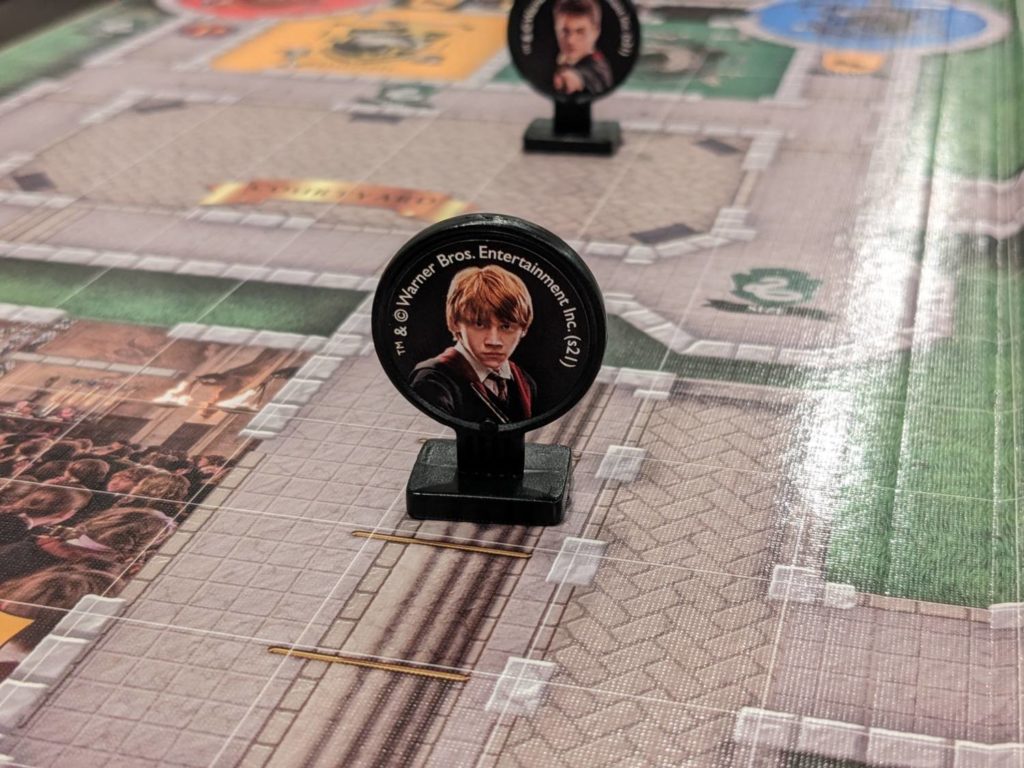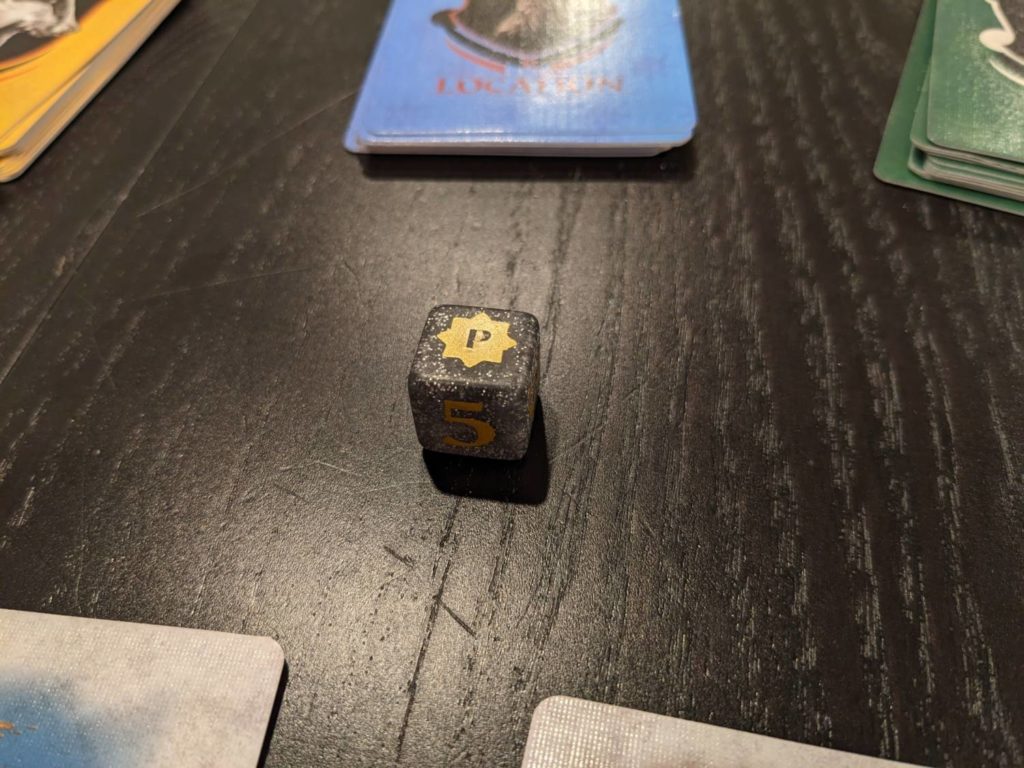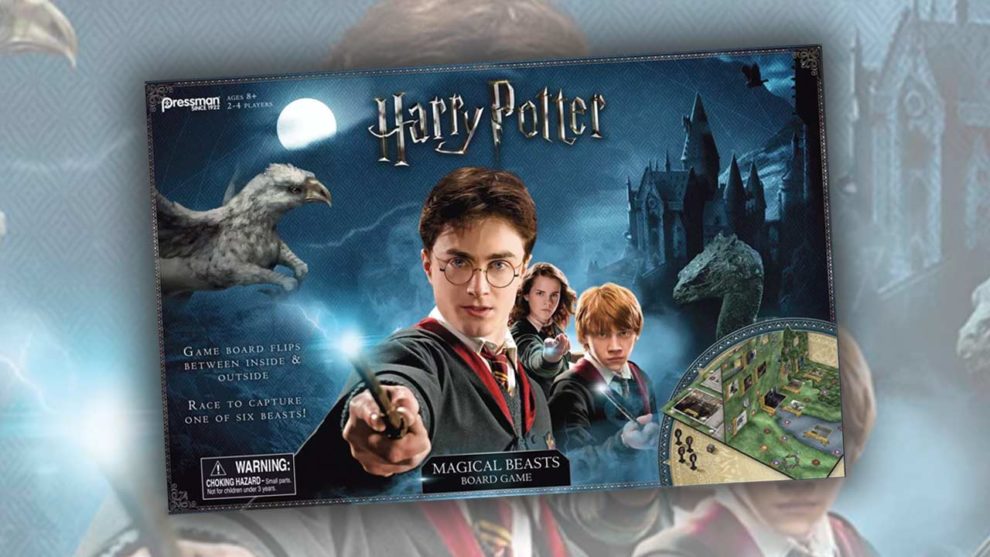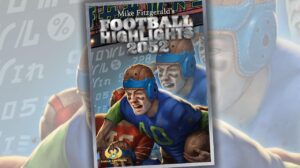Disclosure: Meeple Mountain received a free copy of this product in exchange for an honest, unbiased review. This review is not intended to be an endorsement.
Any time I have the chance to add Harry Potter products to my home, I do it.
My kids—although mostly, my daughter—love all things Potter. LEGO sets, costumes, food products, toys, wands, movies, you name it. We have way too much Potter stuff lying around, but in the eyes of the children, the amount of stuff is just right.
I reached out to our friends at Pressman to grab a couple of older games in the catalog, including their 2016 release Harry Potter Magical Beasts Board Game. It doesn’t have a fancy title but that title does include the words “Harry Potter”, so I knew I could get this one to the table as soon as it hit my doorstep.
Sadly, our family is now wishing we didn’t have a doorstep.

The Passage is Dark
Taking on the roles of Harry, Ron, Hermione, or Ginny, players have a simple goal: run around the board and collect enough cards to “discover” one of the beasts hiding inside or on the grounds of Hogwarts before the other players.
Those two locations (interior and exterior) are the innovation behind Magical Beasts: the board flips using a third panel hinged in-between the main board, to create the effect that players are traveling from inside to outside locations, and vice versa. Whenever someone rolls a “P” (for passage, which takes the place of a one on a six-sided die), the board flips and everyone is transported to the other side of the board, whether they want to travel or not.
So, that’s your game: roll a die, move around the map, touch spaces that grant the active player a card from one of the corresponding decks that help players discover beasts. When cards are drawn, they can be viewed by the active player then placed on top of that player’s deck based on the card type. This is important, because if a player rolls a P to flip the board, that player also gets to steal a card from anyone who was not standing on one of the passage spaces pre-printed on the game board (which in my experience is quite often).
The cards come in four types: MOM Classification, Location, Size, and Color. Using a guide, players can always tell if they have collected the right cards, and as soon as anyone has the right combination for one of the beasts, they immediately win the game.
In a strange twist, my kids kept rooting for Magical Beasts to end quickly, because they absolutely hated this game.

Issues Galore
One look at the game’s BGG page, and it’s easy to see that this game didn’t go over well with fans.
Magical Beasts has a massive, Basilisk-size list of problems. Even my eight-year-old picked up on many of these items five minutes into our first play.
My experience starts and ends with the same question: who came up with the idea to trigger the board flipping by using a six-sided die?
It never feels like you are playing as one of the movie’s characters (this game is based on the film series, with pictures from the films printed on the game board). The cards are shockingly bland, given that this game has the license to put (one assumes) whatever they want from the films onto the face of each card.
All you are doing is walking around the board to touch spaces and draw cards. So, if you don’t roll well, you don’t draw any cards. One side of the board has two of the four card types to draw from; the other side has the remaining two card types.
But you can’t move from outside to inside, or inside to out, unless someone rolls a P. You can’t choose to move between locations, so sometimes, you’ll be waiting to take meaningful turns to get different cards.
And then, it happens: players will consecutively roll a P three or four times in a row. When this happens, any player standing on a P is safe, but anyone who is not on a P can be robbed. The active player can choose to move players to a non-P space on the new side of the board, meaning they could be subject to robbery two or three times in a row before taking a turn.
As I keep saying in my reviews of children’s games, CHILDREN DON’T LIKE IT WHEN YOU STEAL THEIR STUFF. So, you can imagine the heightened atmosphere at my kitchen table when my son was robbed on consecutive turns because no one else had any cards worth taking. I was sure he was going to chuck the game out the window, but to his credit, he only pouted and screamed as he was subjected to nonstop robbery.
Let’s talk about the cards for a moment. In one of our games, I was hunting for Merpeople. One of the location cards in the game is Worldwide. (That’s where the Merpeople live: Worldwide. Don’t worry, it gets better.) Everyone in my family assumed that Worldwide meant “anywhere”, as in, any of these location cards would fit. In Magical Beasts, you need to have a card that specifically says Worldwide.
Merpeople have a XXXX MOM Classification. (I don’t know what MOM is, but its range is from three to five Xs.) To discover Merpeople and win the game, you need a XXXX MOM Classification card, a Worldwide Location card, a Medium Size card, and a Varies Color card.
Just like Worldwide, we assumed that Varies means any color card. Nope! You need to find a card that says Varies on it. So, instead of just making the connection that Merpeople could be any color, some players will assume that Varies is like a wild card description, so the red, or the black, or the blue card could work. Nope!
“This game is broken,” my daughter lamented. Worse, the kids won’t play Magical Beasts any more. In our home, this is the death knell for any family game, and the fact that actor Daniel Radcliffe’s face is plastered on the front of the box hasn’t changed her opinion.

Stick with the Books
Harry Potter Magical Beasts Board Game is a colossal miss. It doesn’t really make players feel like they are playing in the Potter world, the board flipping gimmick is just a gimmick, winning or losing is incredibly swingy (even for a dice-based children’s game), and the whole thing feels kind of cheap.
How cheap? This insert might be the worst one I’ve seen in a game—there are no finger inserts to pull out the four decks of cards once they are placed back in the box. Even using simple iconography instead of the words on each card would have allowed for children younger than reading age to play it. The instruction booklet doesn’t call out whether players can look through their card stacks to sort their cards whenever new cards are drawn. The illustrations in the rules don’t really serve any purpose. The whole production feels a bit like a rush job.
A disappointing tie-in for a legendary series of stories.












Time range: zero minutes
The game gives me existential dread just thinking about it
Ministry of Magic